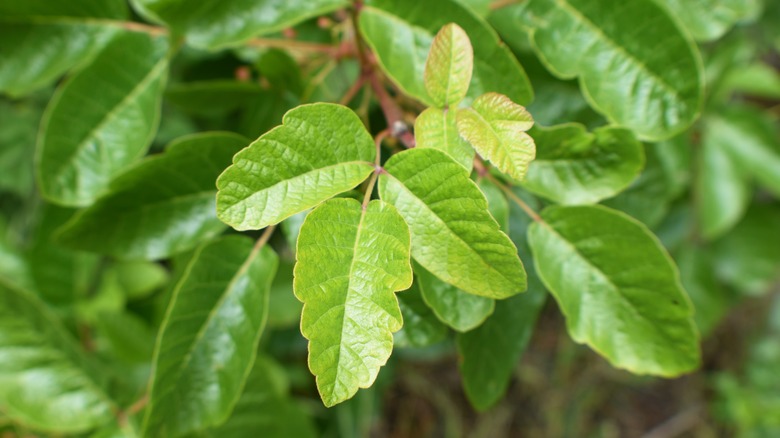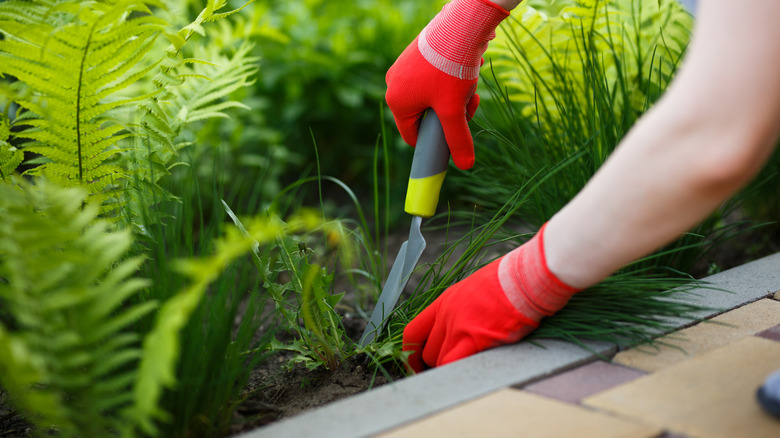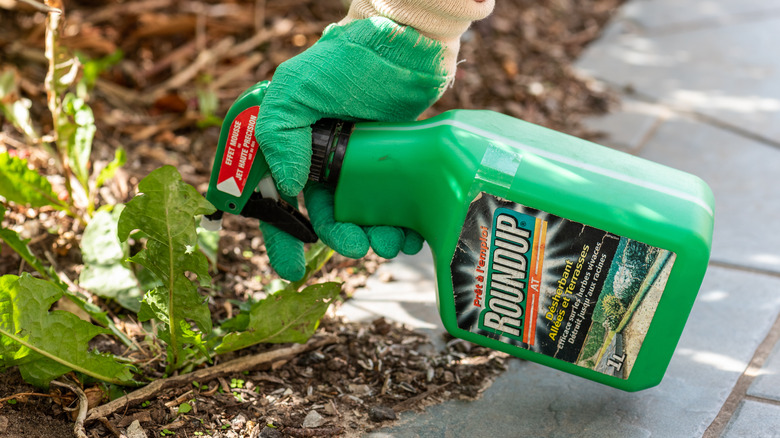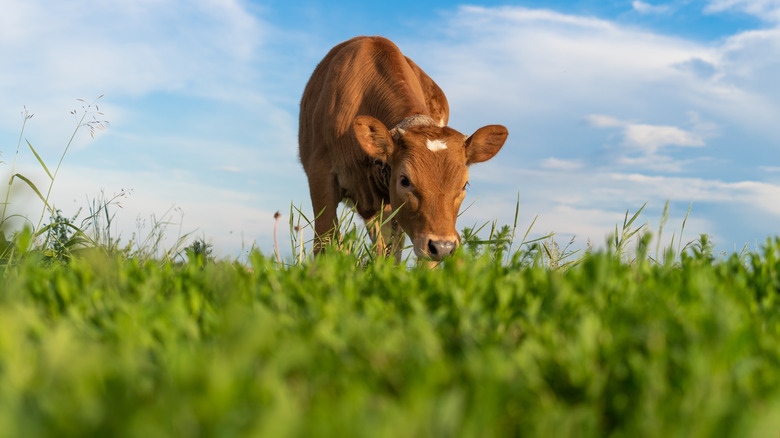The Best Ways To Get Rid Of Poison Oak
According to Almanac, poison oak is a close relative to a very infamous poisonous plant known as poison ivy. In comparison, both plants contain the same toxic compounds known as urushiol, which is present in all parts of the plant (per Up To Date). The related plants also tend to look very similar. Both have three leaves emerging from their stem, but while poison ivy boasts smooth oval leaves, the leaves on poison oak are more wavy, similar to the leaves on an oak tree.
Because we know to avoid poison ivy and poison oak, we understand that there can be consequences when we come into contact with them. Cleveland Clinic explains that after touching poison oak, your skin will often form a rash that can cause different levels of discomfort depending on how sensitive you are to urushiol. To avoid these consequences for you and your family, it's important to remove these plants as soon as you detect them in your yard. If you are looking for the most reliable way to do so, let's explore the best ways to get rid of poison oak in your yard.
Physical removal
One of the quickest and simplest ways to get rid of poison oak in your yard is through physical removal. Unfortunately, this technique is also the most dangerous. The University of California recommends not attempting this type of removal process if you have an extreme intolerance to poison ivy or poison oak. Even if you can tolerate it, always wear protective clothing throughout the process, just in case. For example, using gloves when directly touching the plant.
When removing the plant, you can choose to do it with your hands alone, or with the assistance of a garden tool, like a shovel or a pick. Regardless of how you decide to remove the plant, you must remove and dispose of it properly to ensure it doesn't grow back or spread to other parts of your yard. The University of California informs that you must remove everything down to the roots for the plant to be completely extracted from your yard. When disposing of the extracted plant, never throw it into compost or attempt to burn it. Instead, Martha Stewart suggests placing the entire plant into a plastic garbage bag before throwing it away. You should also rake through the site to catch any broken roots that could potentially grow back.
Herbicides
If you have an extreme intolerance to poison oak or simply don't want to remove the plant from your yard physically, a variety of herbicides can do the trick. Oregon State University says that glyphosate and triclopyr are two herbicides that can effectively eliminate poison oak. They note that if you're trying to exterminate poison oak at the beginning of its growing season, using a triclopyr herbicide is recommended. However, if you are attempting to exterminate later in the season, it is better to use a glyphosate herbicide. Some varieties of glyphosate you may want to consider using include Roundup and Accord. Garlon is the most commonly seen commercial variety if you are set on using triclopyr.
When you are ready to apply your chosen herbicide, you can spray a liquid form on top of the plant or spread a granular form over the plant and activate it with water. Before applying the herbicide, however, DoMyOwn's YouTube Channel states that it's important to avoid mowing or pulling the plant because herbicides work best when they are transferred to the roots. It may take a couple of rounds of fertilizer to rid your yard of poison oak completely, but when done correctly, it will exterminate and prevent it from growing next season.
Alternatives
Whether you are looking for a new and unique way to get rid of poison oak in your yard, or if hand pulling and herbicides don't seem to work, Farmer's Almanac gives a variety of alternatives you can try for your poison oak problem. First and foremost, you can make your own spray to kill unwanted plants in your yard. To make this spray, mix 1 cup of salt and 1 gallon of vinegar. Then, finish off by applying a few drops of dish soap and apply it directly onto the plant. Keep in mind that it may take several applications before the solution begins to work. Although bleach can work similarly, it is a harsh chemical method you may want to avoid.
If you have farm animals anywhere on your property, cows and goats find poison oak an enticing snack. Not only can these animals eat away this unwanted plant, but they also won't face the side effects that most people and animals have when coming into contact with it. Finally, if all else fails, Farmer's Almanac mentions that the process of growing grass over poison oak can ward this poisonous plant off your property. All you have to do is plant grass seeds throughout the area because poison oak will not grow where other plants are. As great as this technique sounds, however, it takes time because the grass needs to grow.



